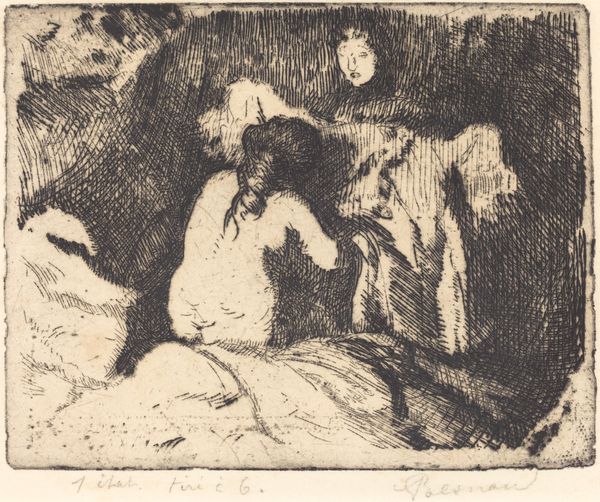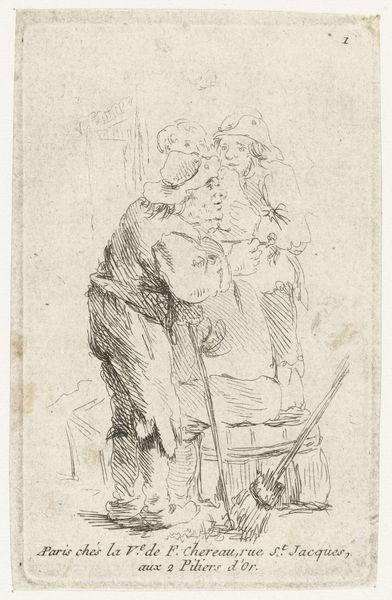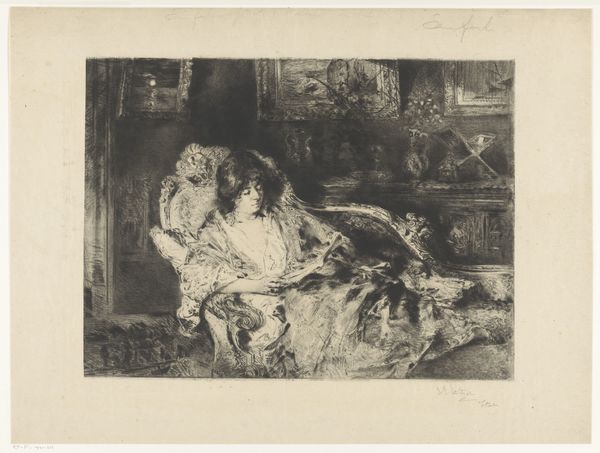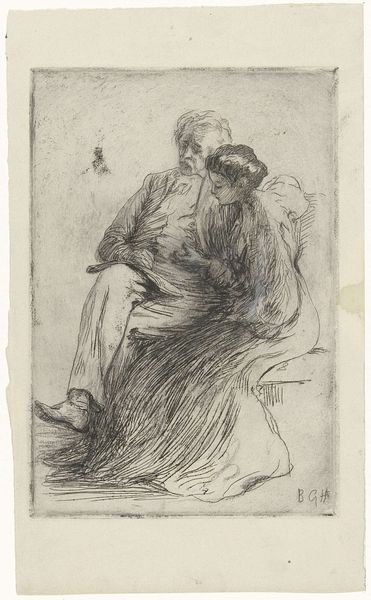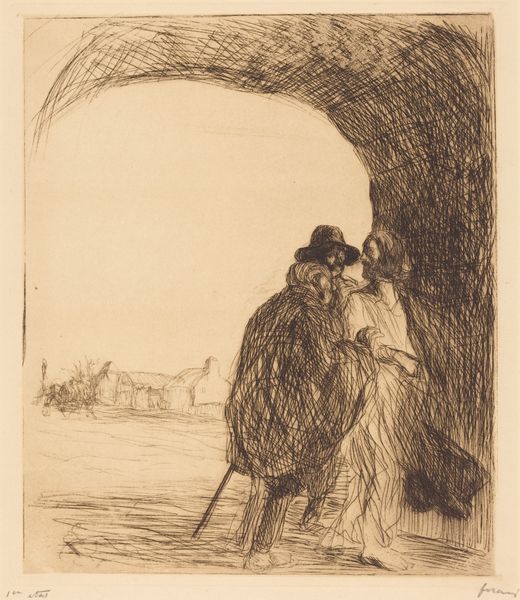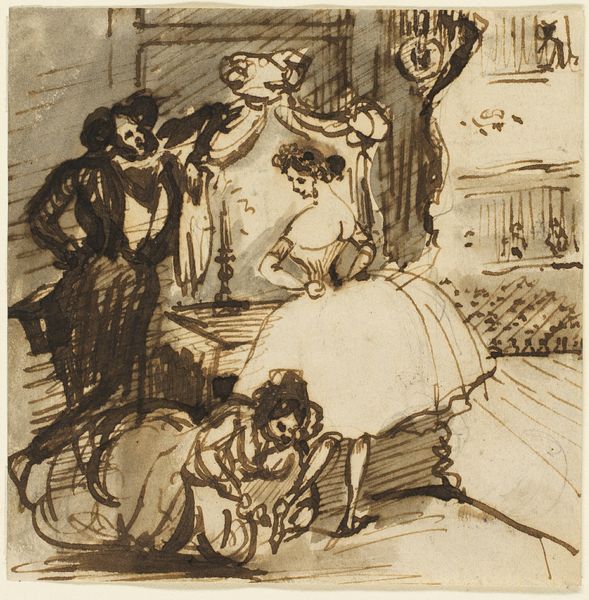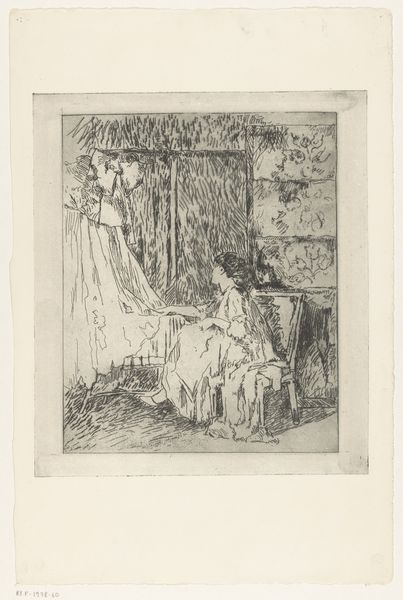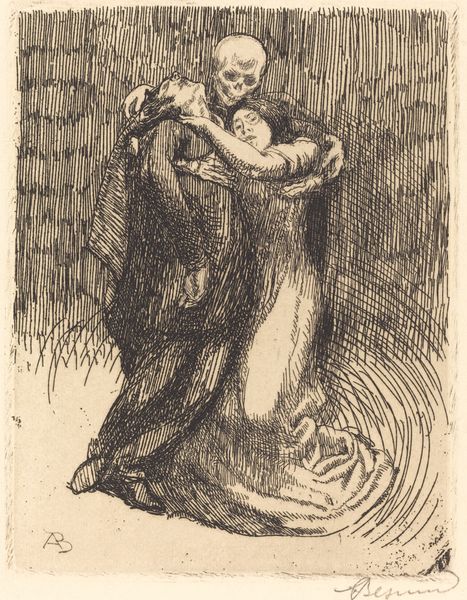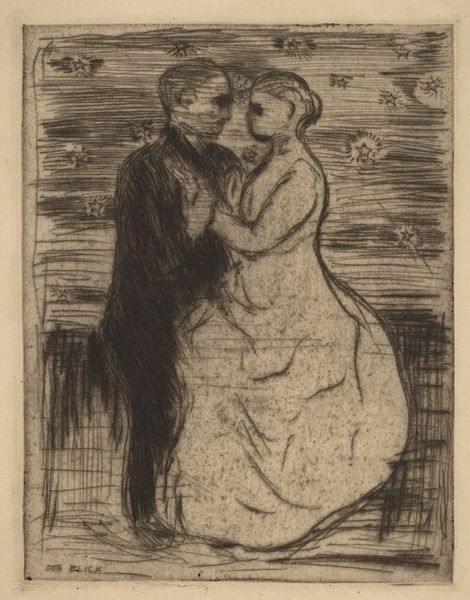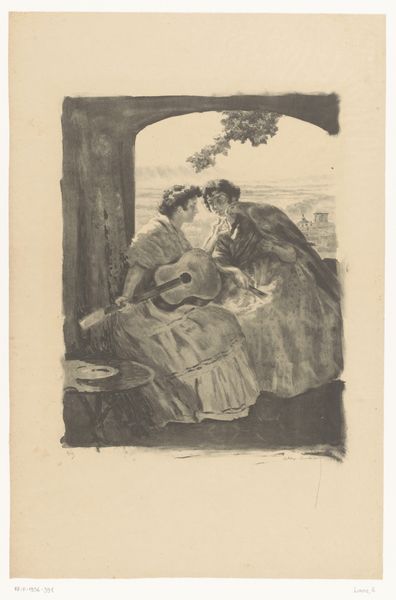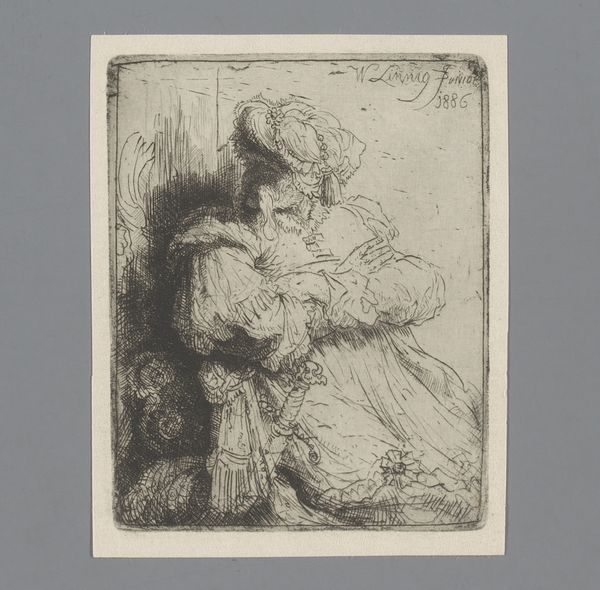
Copyright: Public domain
Editor: Here we have Paul-Albert Besnard's 1913 ink drawing, "Amorous Conversation." It’s delicate and intimate; you can almost feel the hushed atmosphere. How do you interpret this piece within its historical context? Curator: That's a great observation. The romantic style places it firmly within an artistic tradition, but it also comes at a time when traditional societal structures were being questioned and re-defined. We must consider the function and placement of romantic artworks during this period, which were publicly accepted and expected. Given that it is titled ‘Amorous Conversation,’ how might the depiction of intimacy differ from previous eras, especially with societal shifts influencing its display and interpretation? Editor: Interesting. I hadn't considered how changing social mores might influence how it was perceived back then. It feels like a very private moment made public. Curator: Precisely. Look at how the figures are positioned. They appear somewhat nestled and hidden within a sketch of greenery. Given the public display of such a work, it begs the question of whether such a private scene, by virtue of its public display, could influence changes in social behaviors. How might this “Amorous Conversation”, once viewed privately, become a subject of public consumption, ultimately impacting societal norms surrounding intimacy? Editor: I see what you mean. Showing this intimacy in a gallery could then almost become a commentary on shifting social boundaries, perhaps challenging traditional norms? Curator: Exactly! And remember, museums and galleries weren't neutral spaces; they played an active role in shaping taste and reinforcing or challenging prevailing ideologies. This piece shows a turn in thinking. Where intimate displays such as these go public, it changes the meaning we read from the art. What do you take away from how socio-political structures affect artistic expression in turn? Editor: That context completely shifts my understanding of the artwork. It makes me realize how artworks are not isolated, aesthetic objects. Rather, they are cultural objects with great power and meaning. Thanks so much. Curator: My pleasure, seeing art within history brings out even more nuance in the experience.
Comments
No comments
Be the first to comment and join the conversation on the ultimate creative platform.
